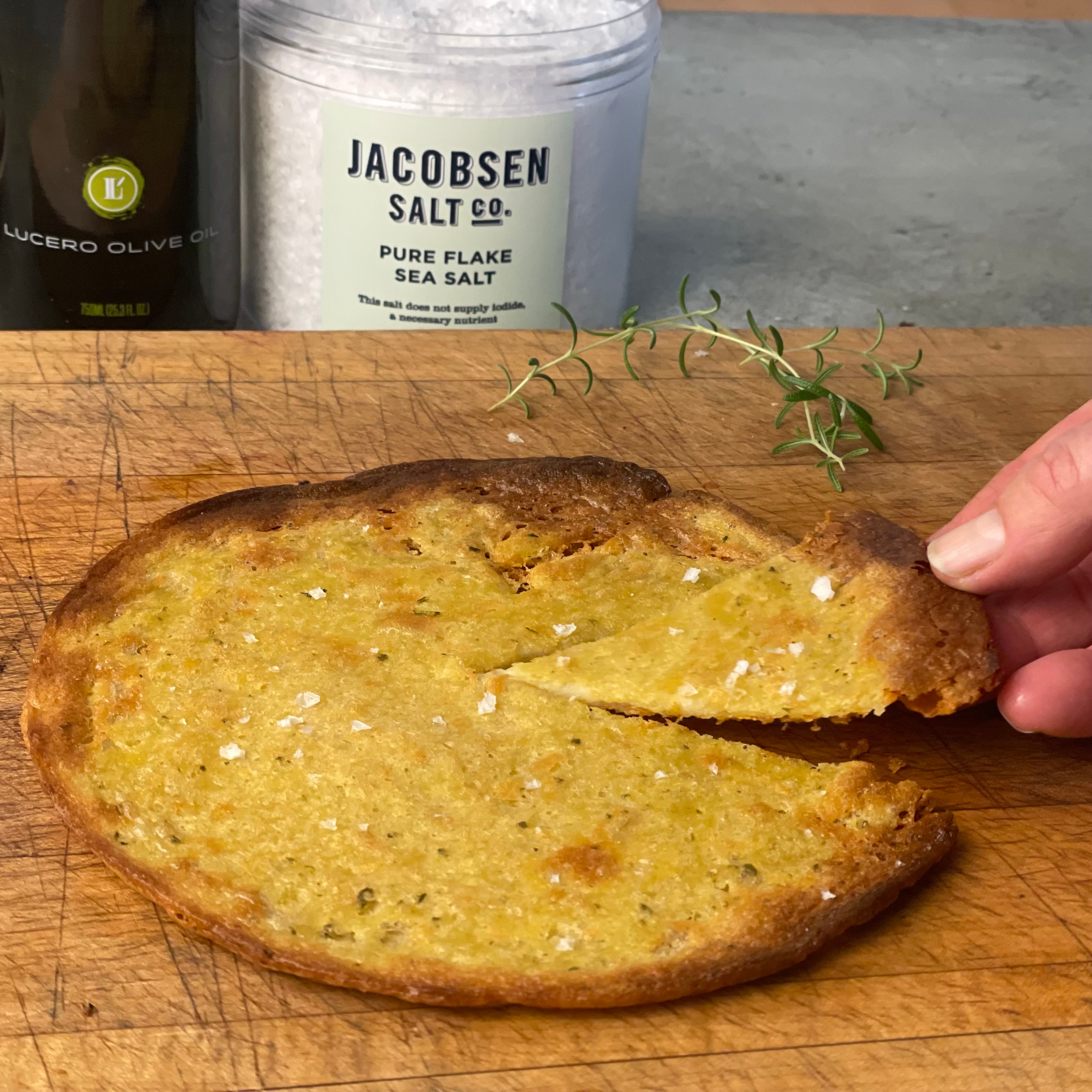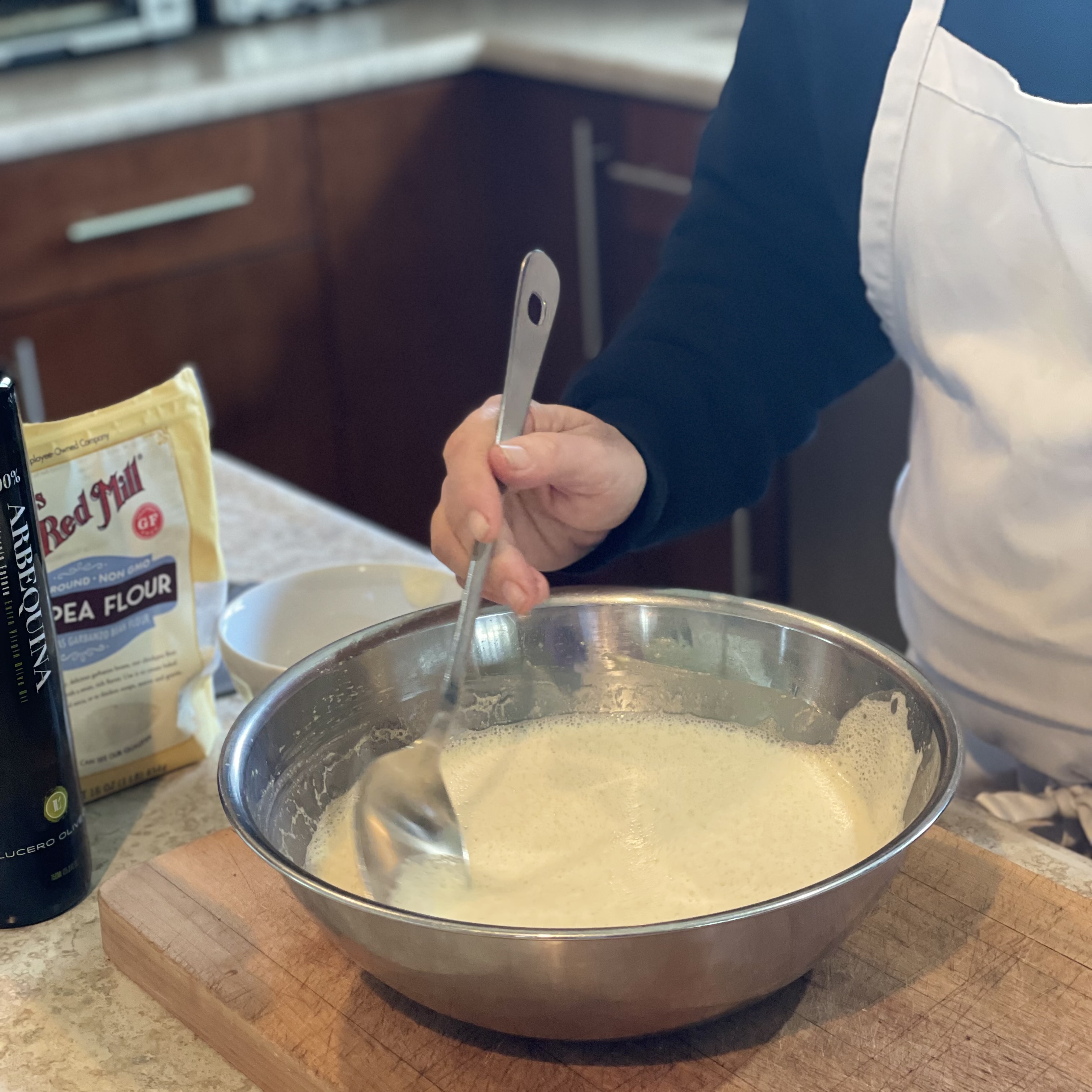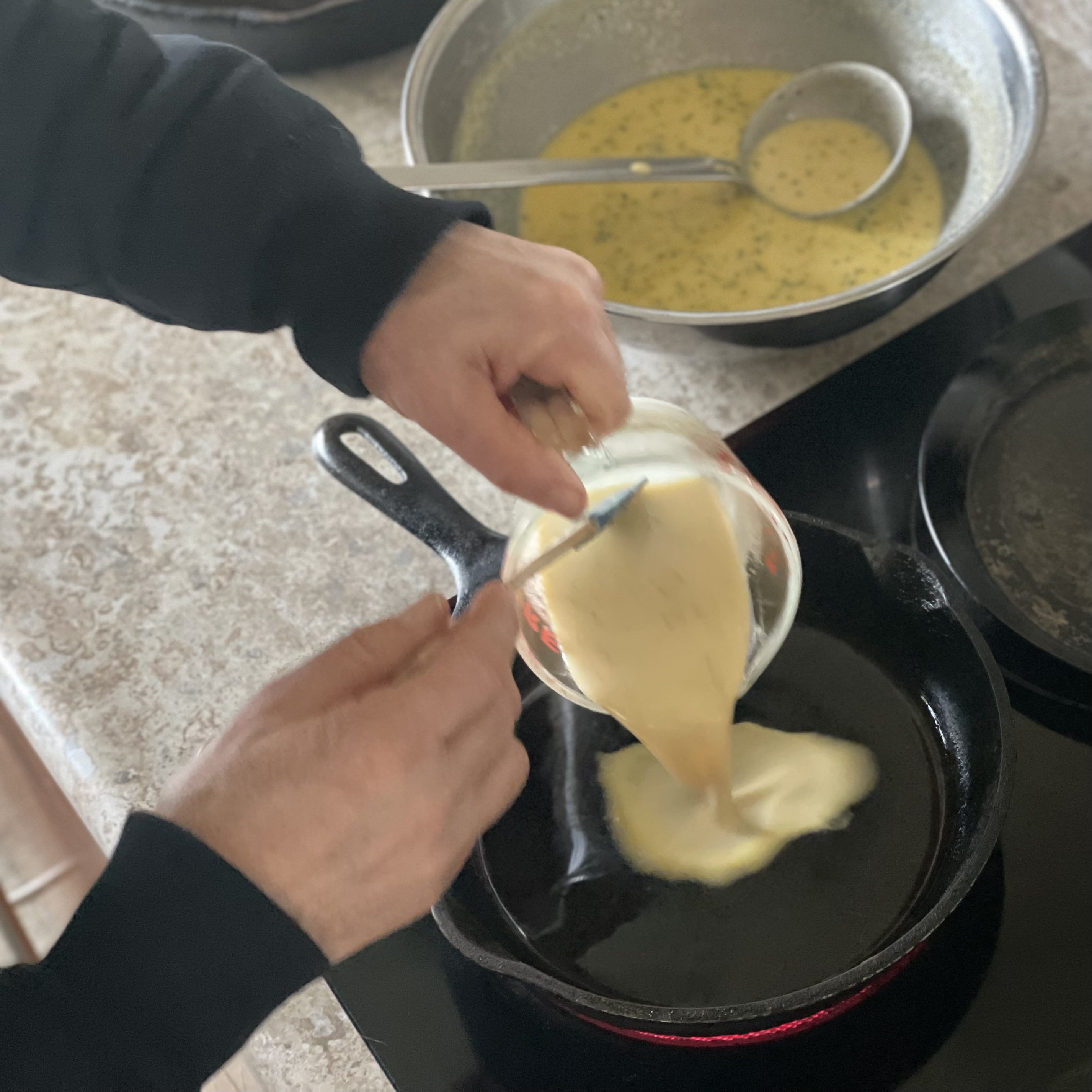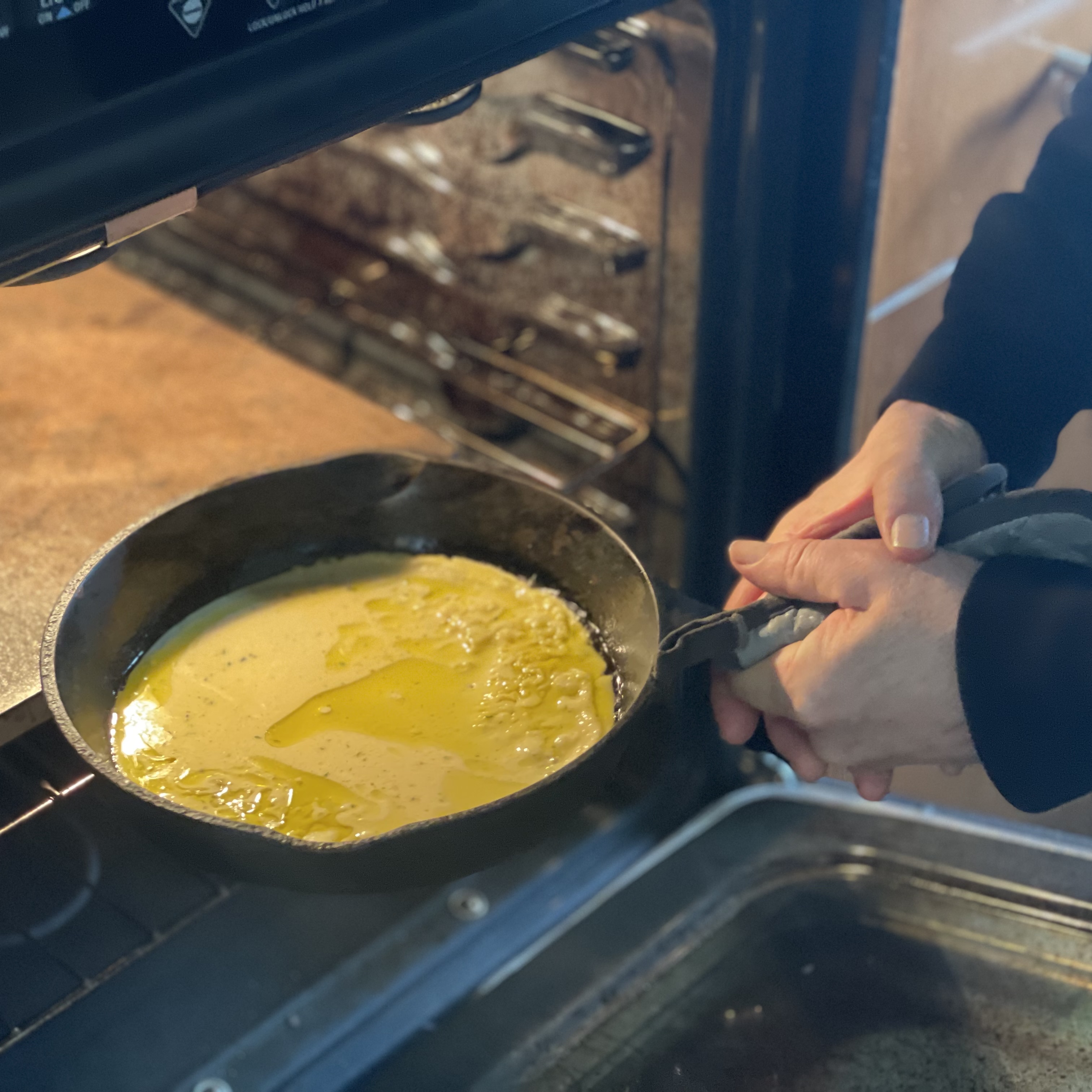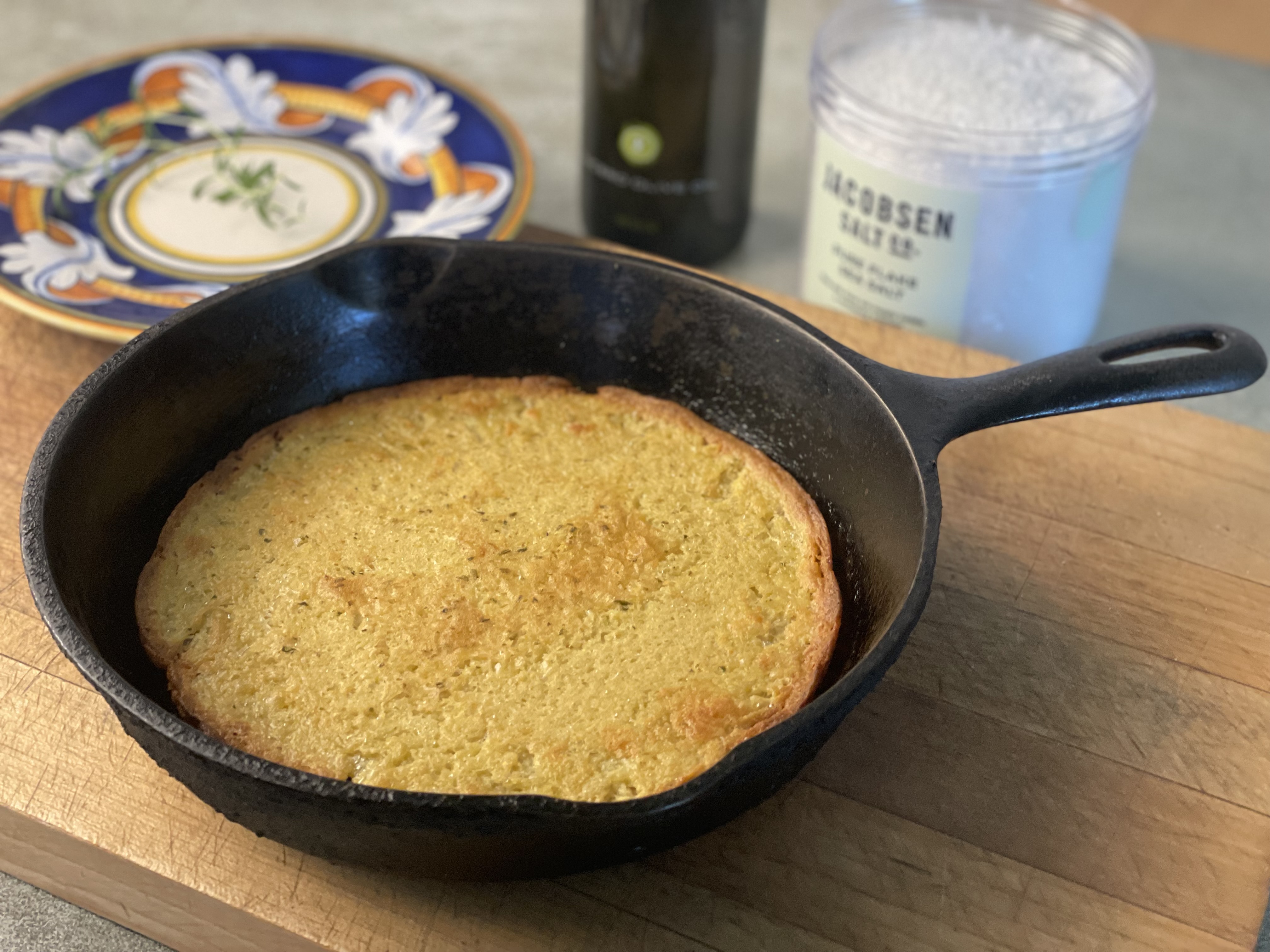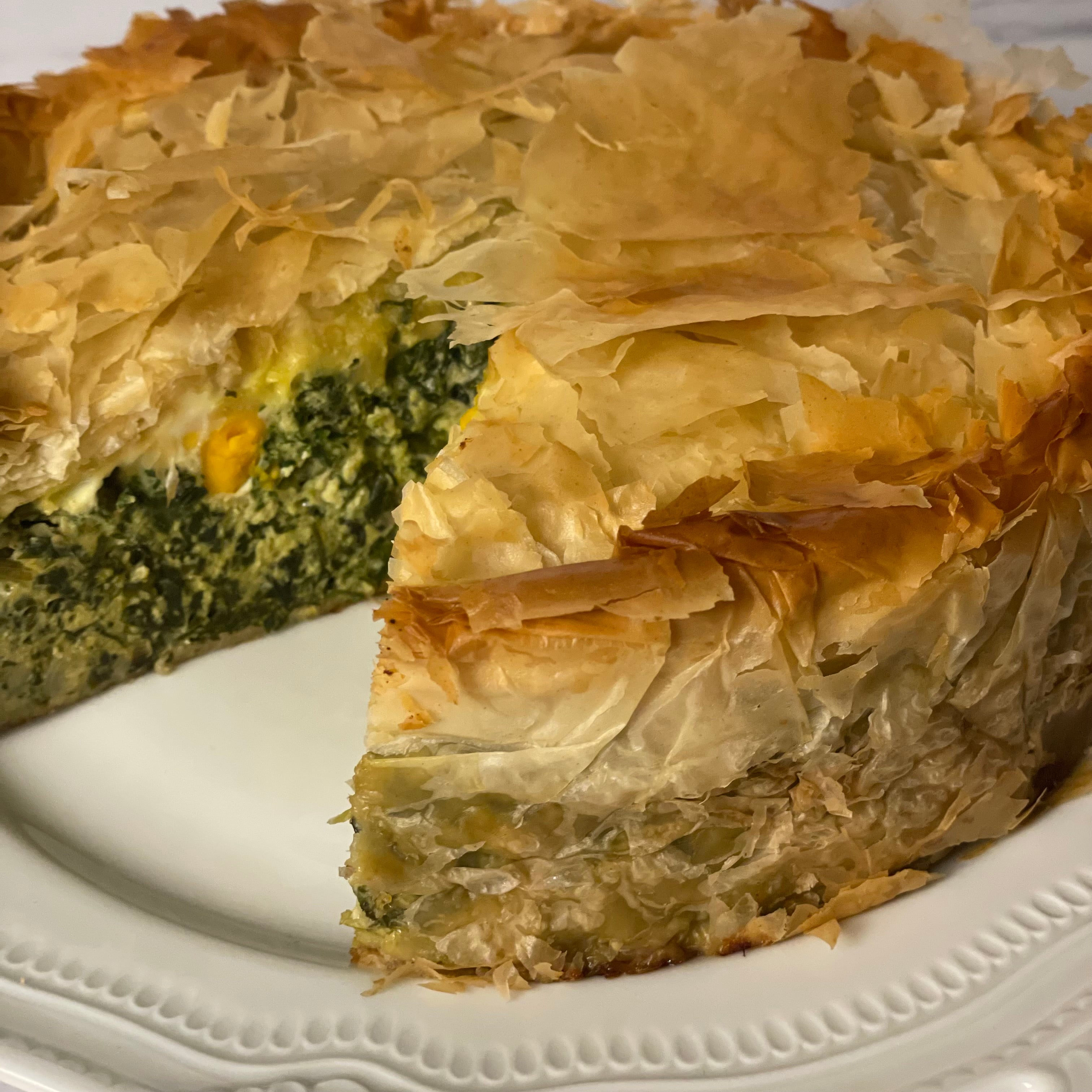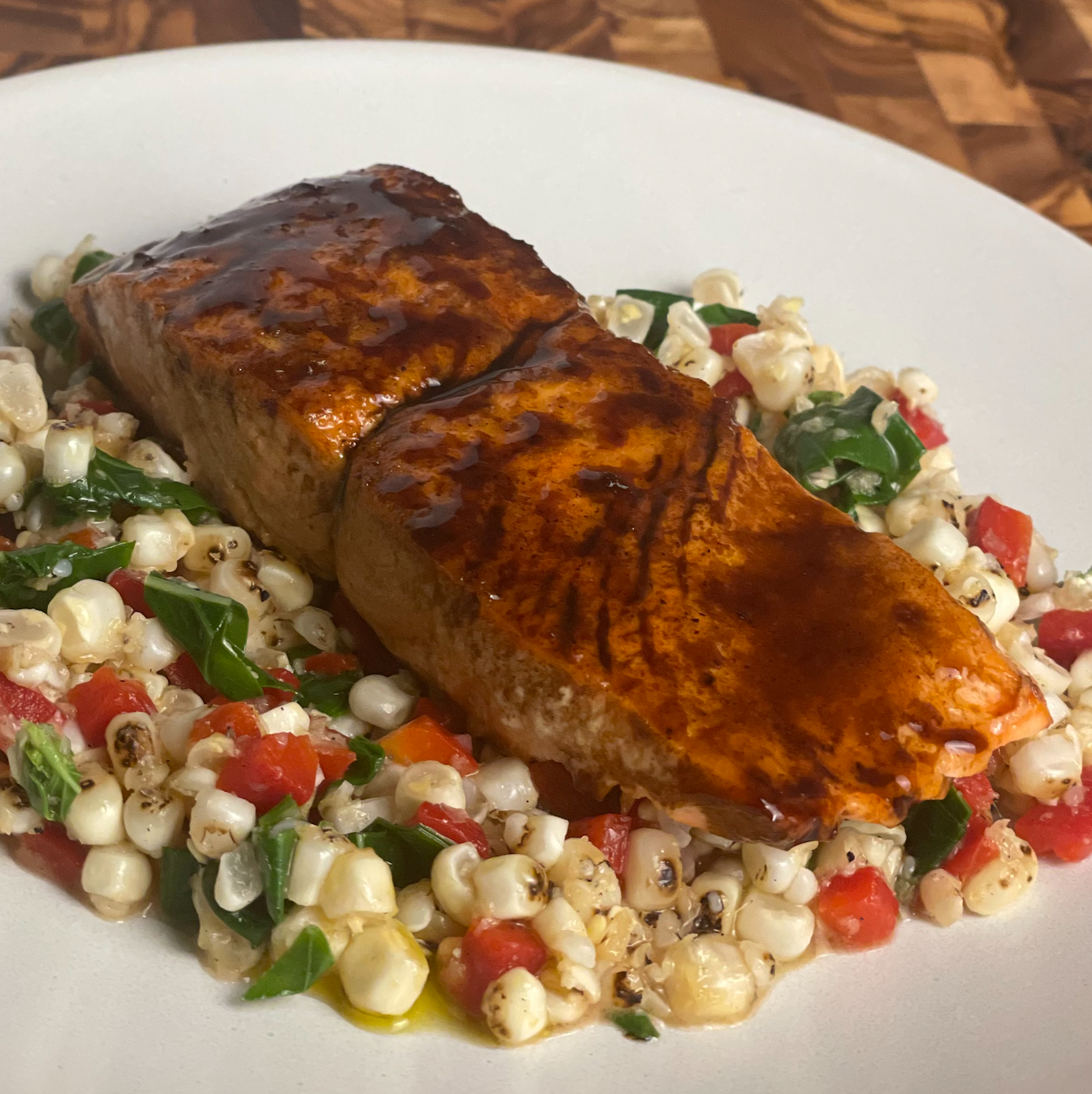Directions
Traditional Cooking Method (stove top start, oven finish)
Whisk together lukewarm water and chickpea flour in a large bowl until smooth. Cover the bowl with a plate and let stand at room temperature for 2 hours. Skim off as much foam as possible from the top of batter. Whisk 3 tablespoons olive oil, kosher salt, and rosemary into batter until well combined.
Preheat the oven to 500° F (260ºC).
Heat an 8” cast iron skillet over medium high heat until very hot. Pour 2 tablespoons olive oil into the skillet and swirl to coat the bottom. Continue to heat until oil shimmers and almost reaches the smoke point. The idea here is that the batter should start to sizzle as soon as it hits the oil.
Quickly pour 1/2 cup of the batter into hot oil; carefully transfer the skillet to the preheated oven. Caution: make sure to use oven mitts at all times during this process—especially when taking this pan out of the oven. Note: You’ll have to stir between pours as the mixture will separate.
Bake in the preheated oven until pancake is well browned and crispy for 12 to 15 minutes. Peek halfway through to make sure it isn’t over browning or burning. The pancakes are thin and cook quickly. Turn 90° if needed to ensure even browning.
Immediately after removing the pan from the oven, loosen the edges of the pancake with a spatula and then transfer to a board and cut into wedges. Some folks prefer to rustically tear the pancake. Garnish with freshly ground black pepper and a nice finishing flake salt. Serve and enjoy immediately.
The bottom of your pancake will be brown and very crispy. Here is a photo of the underside.
Alternative stove top (no oven) method
If you’d rather not crank up your oven to 500° F, this farinata recipe will also work made solely on the stove top; just be aware that the end result will be more cakey and not nearly as crispy. Set your stovetop to a medium heat, and turn your pancake halfway through the cooking process. Take care to not burn the bottom when trying this method. Lift the edge of the pancake about 5 minutes into the cooking process to see how brown it is. Turn as soon as the bottom is well browned. Cook the other side for about 3 minutes more or until that side is well browned. You might get some oil splatter when turning, so be careful. [Tried, but not photographed].
Recipe Note
Once your pancakes stop sticking you can try thinner versions if you'd like. Donald started making some crepe-like versions this way on the stove top in a well seasoned pan. If prepared in this way, they're so thin that they won't work using the oven method and will come out more crispy.
Donald doubled the recipe and tried the various methods and all were delicious. Try them with sweetened ricotta and jam!
We ate these with just a sprinkle of flake salt, and while farinata is very satisfying by itself we also enjoyed some with some Chico Honey after dinner. The chickpea (garbanzo) flour taste is very mild, rather nutty and sweet.
In comparing recipes between Italian home or restaurant cooks and some Americans, we noticed that some Americans used less water to flour in the mix as well as a more generous pour per pancake. The "American" versions yielded a more thick and cakey result looking rather a lot like polenta or even shortbread in one case. Our version is offered to be a bit closer to what you'd find in Liguria: crispy edges and slightly creamy/barely cakey center...and maybe even reminiscent of what you'd find in a nice Italian place in Brooklyn.
Hat tip to Chef Robbins and Helen Rosner for the inspiration.
